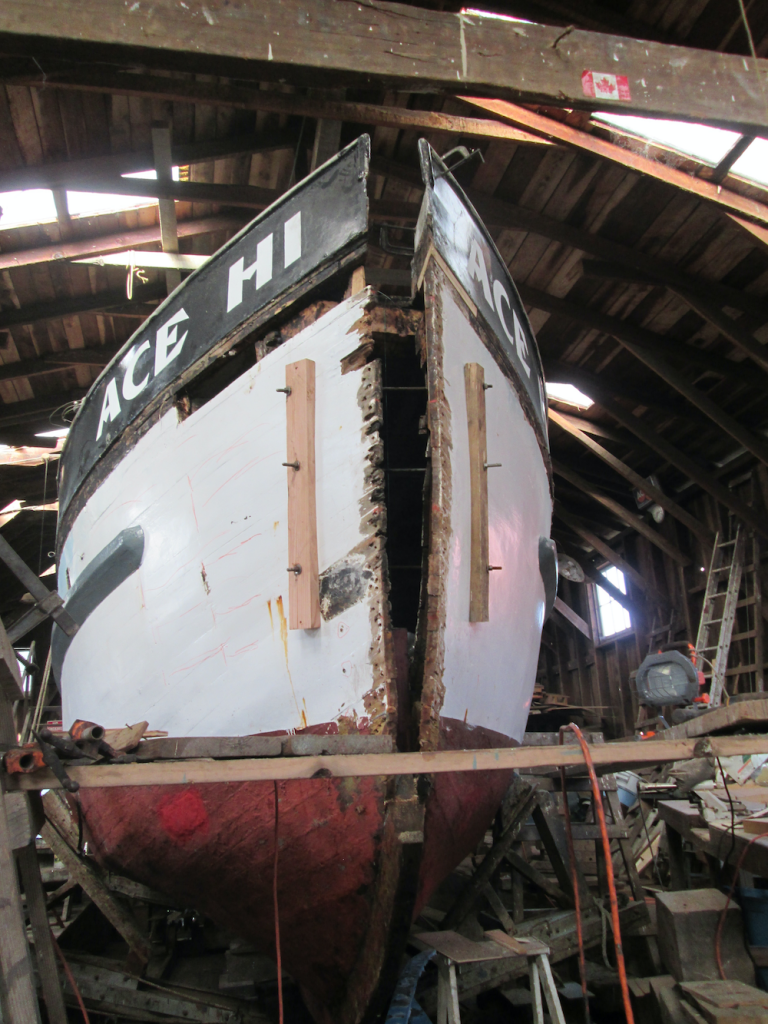The Ace Hi, a wooden double-ended salmon boat was ready to go back in the water at Makela Boat Works in Fort Bragg, Calif., at the end of January. The 44-footer was hauled to have its bow stem replaced. But it wasn’t long before it became obvious the Ace Hi needed its planking to be refastened below the waterline.
“It had never been done before,” says Makela Boat Works owner Howard Makela.
The planking dates back to when the boat was built in in 1947 in Marysville, Wash. The planking, which Makela thinks is old-growth fir, he describes as “in real good shape,” though some planking did have to be replaced.
The hull planking still had the original galvanized boat nails. They remain in the planks, supplemented with new galvanized wood screws.
“We didn’t mix the metals. We kept it the same,” says Makela. The holes for the new fastenings were filled with wood.
The bow stem was replaced, as were a number of starboard planks that were fastened to it, as far down as the waterline.
“The port-side planks weren’t bad,” Makela says. He figures this was the second time the bow needed a new stem.
What caused the problem was fresh water leaking down from the deck and getting behind the bow stem and plank ends, rotting the wood from the top down.
Makela, who normally works alone, is a little different from most boatbuilders in that if a boat’s owner is capable, he’ll let the boat owner “help — to a certain point.”
In this case, the Ace Hi’s owner was sanding off the wood plugs used to fill the fastening holes, scraping some of the hull and filling the planking seams. He also replaced the iron sleeve in the deadwood that the rudder shaft went through with a stainless sleeve.
Makela say the 75-year-old Ace Hi would probably be in worse shape if the boat “hadn’t been fished a whole lot. Not parked and walked away from.”
He adds that the boat’s owner would appreciate any history of the boat from West Coast readers of this column.







